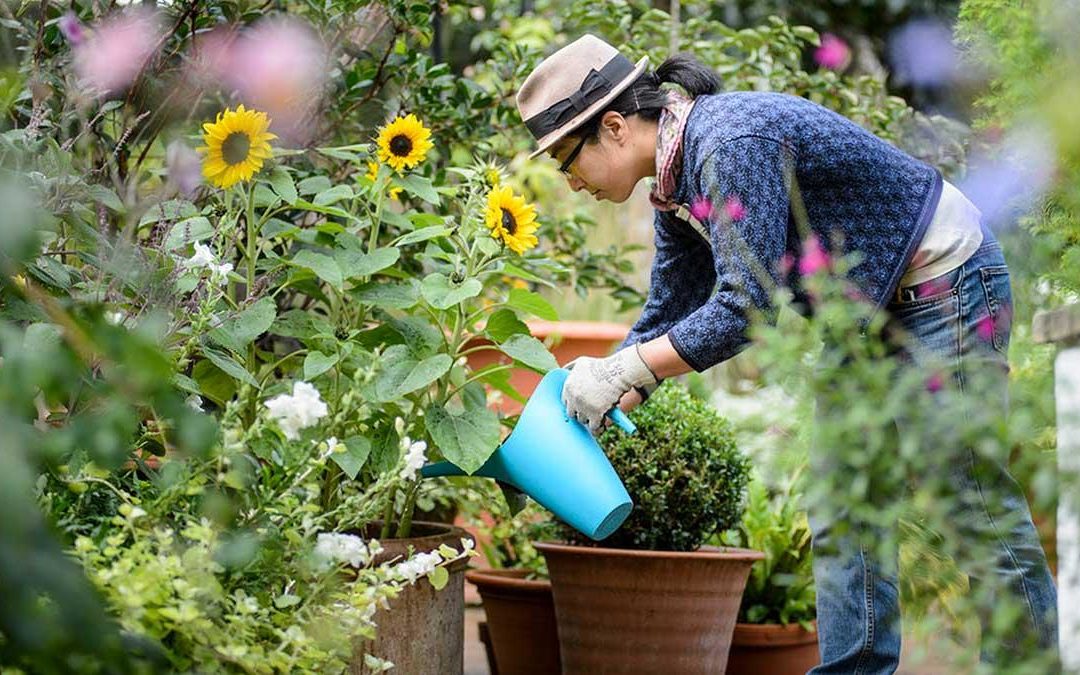
Gardening is one of the joys of life for many of us, but back pain can throw a wrench into the best-laid planting plans.
That doesn’t mean you need to cross gardening off your list. With a few adaptations and a dash of creativity, you can still exercise that green thumb by following these 11 strategies for minimizing injury.
Safe Moves for Your Back
Here are several tips on gardening in a way that is relatively gentle on your back:
- Warm-up first
Gardening can be a real workout; so warming up your muscles first is a good idea. Try a brisk five-minute walk and some stretching exercises. One relatively gentle stretch is the back flexion exercise, in which you lie down on your back, then pull both knees to your chest while bringing your head forward. If you have back pain, then work with your physician or other health care provider to find the right stretches for you.
- Lift carefully
It's easy to lift heavy pots, bushes, and full watering cans incorrectly and damage your back.
To lift correctly, begin by squatting, not bending at your waist. Use both hands to hold the object, keeping it close to your body, and slowly straighten your legs as you lift.
To minimize lifting, use a wagon, a dolly, or other aid to carry heavy items from place to place. Fill large watering cans just halfway, and consider alternative watering options, such as soaker hoses or automated irrigation systems.
Depending on your back problem, some jobs that involve heavy lifting and twisting may be best left to others.
- Take breaks
It’s easy to lose track of time when you love being out in the yard. Take a water bottle with you as a reminder to take frequent breaks. If you’ve been in one position for a while, do some stretches during these breaks. Also, avoid doing the same kind of job, such as pruning, for a long period. Switch to something else for a while.
- Get support from kneelers and chairs
Getting down on the ground—and back up—can be painful or even impossible, depending on your level of pain and flexibility. Heavy-duty kneelers, especially those with raised, padded handles to help you get up and down, allow you to use your arm strength to aid in the process. Kneelers usually include a well-cushioned base to reduce stress and impact on your knees and back. Many kneelers also convert to a low chair.
- Add cushioning with knee pads
Wearable or moveable knee pads are a good option if you feel more comfortable kneeling at ground level. Multiple types of foam are often used to maximize cushioning.
- Use garden scooters to avoid twisting
Stretching and twisting put added stress on the joints and discs in your spine. One way to minimize twisting is to use a wheeled scooter. Scooters range in size from small scooters made to fit in tight garden spaces to larger scooters with baskets.
- Try out specialized tools
Long-handled tools can eliminate much of the bending required by planting and weeding. Long-handled trowels and cultivators can be helpful if bending forward causes or worsens your back pain.
- Garden while standing
Wall gardening, also called vertical gardening, is a trend of planting up, not across the ground. If bending is painful for you, working more at your eye level may be something to consider.
In one type of wall gardening, plants and soil are tucked into pockets made of felt or similar material, all mounted on a structure attached to a wall. The plants gradually grow together, forming a wall of flowers or greenery.
Other wall gardening styles use a metal or wooden structure along a wall, with places for attaching varying sizes of planters. The look can range from artsy to elegant.
- Bring the plants to you
Raised-bed gardening using beds 2 to 3 feet tall offers plenty of options. Some of the sturdier raised beds include an edge where the gardener can sit while planting or harvesting vegetables or herbs. Raised beds are often wheelchair accessible as well. Some raised beds are combined with a trellis ideal for climbing vegetables, such as peas.
To reap similar benefits and avoid bending, focus on hanging plants from a wall, fence post, tree branch, or easily accessible window box. Planters designed to attach to a balcony can also be a good option for flowers or a small herb garden.
- Keep plants contained
Concentrating on growing plants in containers can make gardening much easier. In addition to flowers, larger containers can be well suited to growing lettuce and other vegetables. Be sure to use extra-deep containers for tomatoes. Wheeled structures called plant caddies can be used under heavier pots to avoid pushing and pulling.
- Think outside the box
You may discover you need to scale back your garden. Think about what’s most important and what you can let go—or assign to others.
If you can’t get by without colorful annuals, for instance, use them for a pop of color in a small area, and emphasize low-maintenance plants, including ground covers, elsewhere.
Consider having someone else handle the weeding. It’s a repetitive motion that causes more stress on the body than you might expect. If you can’t avoid weeding completely, mulch generously to discourage weeds. The mulch will also keep in moisture, so you won’t need to spend as much time watering.
Precision Pain Care and Rehabilitation has two convenient locations in Richmond Hill – Queens and New Hyde Park – Long Island. Call the Richmond Hill office at (718) 215-1888, or (516) 419-4480 for Long Island office, to arrange an appointment with our Interventional Pain Management Specialist, Dr. Jeffrey Chacko.













